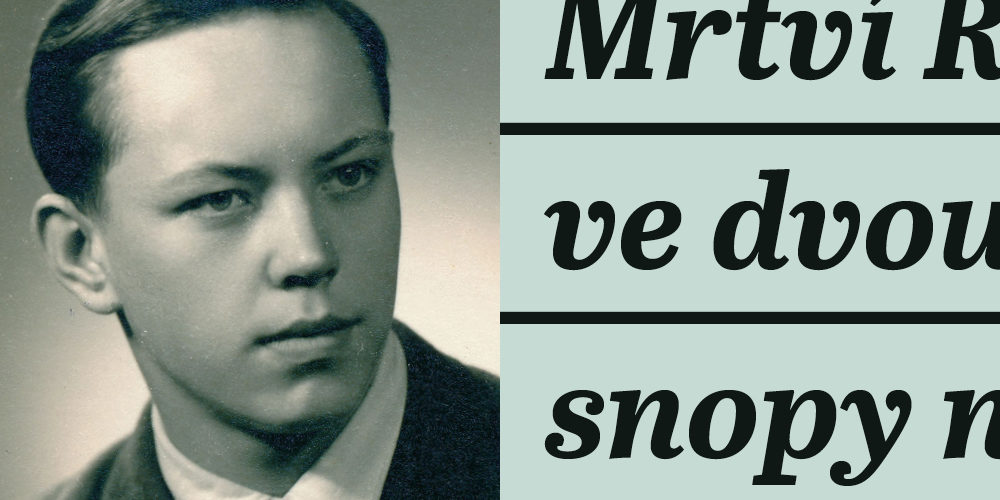In April of forty-five Stanislav was 13 years old. The Red Army troops were rolling towards his native Ostrava and the front was rumbling ever closer. However, it was not the first time he had known what war was like as a child. On 29 August 1944, hidden in a cellar, he survived an Allied air raid. Hundreds of Liberator planes dropped bombs on the city, transforming the center into rubble. “It was thundering outside and our kerosene lantern was marching across the floor,” he recalls. When it had quieted down, he stepped out onto the street, and saw the devastation. The crater in front of the house was a good eight meters across. That was the first time he saw dead people.
Similarly, at the church in Hrabůvka on 1945 May 1, he watched the Red Army putting the dead into rows.
“Graves were dug, an officer spoke for a while, two volleys were fired,” he recalls the moments that have stuck in his memory ever since.
After the war, Stanislav graduated from the Masaryk School of Agriculture in Opava. However, he did not become a farmer. Wherever the liberators came from, ideas of oppression and violence spread. He experienced the communist collectivization in Prlov in the Zlín Region, where he moved to join his wife. “The countryside did not care for Soviet collective farms. We were brought up for private farming.”
He worked on the railroad, working day and night shifts, ensuring the operation of trains. He was never promoted. A Christian devoted to the Catholic Church, he did not hide his faith, and the authorities knew it well. But Stanislav has no regrets: “Throughout my life I’ve felt God’s closeness and sensed his protection.”
Liberation
Nazi Germany was defeated in the Second World War by the determination, bravery, and combat deployment of soldiers from the United States, Great Britain, Poland, France, the Soviet Union, and other countries and nations. But the Soviet Union, led by the dictator Stalin, did not join the Allies until it itself was attacked by the Nazis in June 1941. Until then, the USSR had acted as a partner of Nazi Germany in the spirit of the Molotov-Ribbentrop Pact concluded shortly before the outbreak of the war. At that time, when tens of thousands of Czechoslovaks fled from the Nazis to the USSR, they often ended up in gulag labor camps. The Red Army did not enter the war until the summer of 1941 after Nazi Germany had invaded.
The Soviet Union deployed over six million soldiers to the Eastern Front. We can speak of great heroism and huge losses. The Red Army, with great effort, defeated the better armed and trained German Wehrmacht, and with it the prestige of the “land of the Soviets” logically grew. However, when we talk about the liberation of Czechoslovakia, we must mention, besides the Soviet victims (up to 140,000 Red Army soldiers are said to have died), the tens of thousands of our soldiers fighting alongside the Allies on the Eastern and Western fronts, the brave Slovak insurgents, the paratroopers, partisans and thousands of their helpers, the insurgents from the barricades of Czech towns at the end of the war, and last but not least the soldiers of the American Army who liberated part of the Czechoslovak territory from the west, as well as the forgotten Romanian soldiers advancing with the Soviets from the east. On 8 May 1945, after six long years, peace reigned in Europe and Czechoslovakia became a liberated country. But not free.



